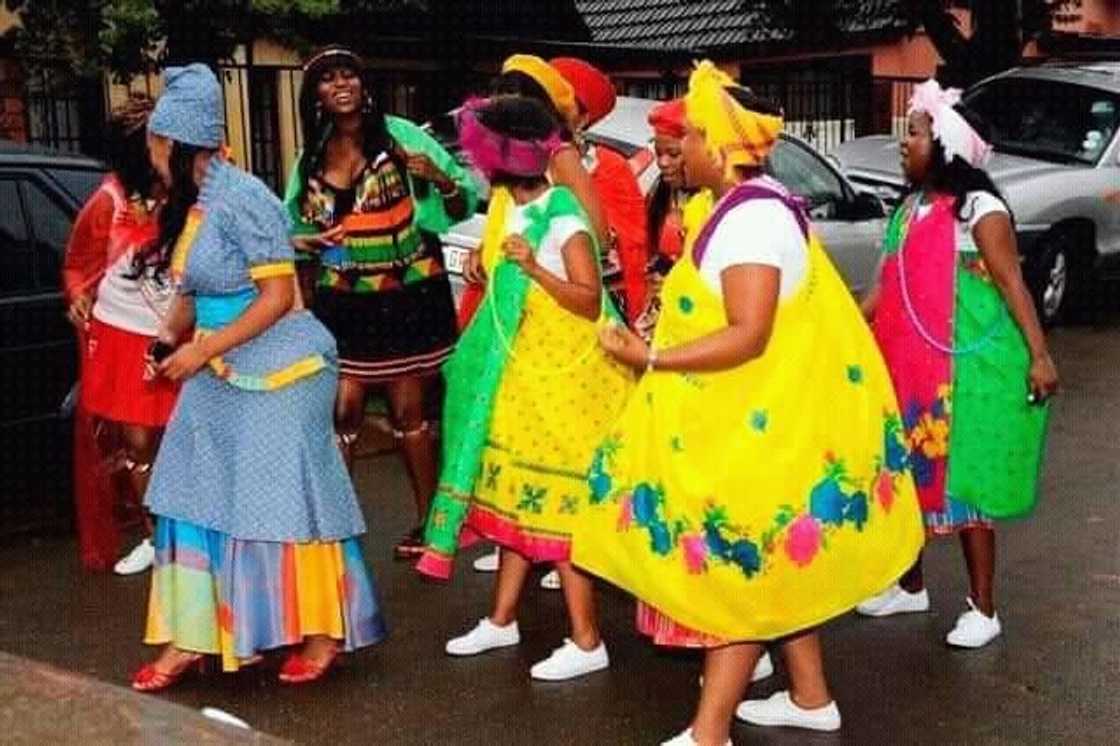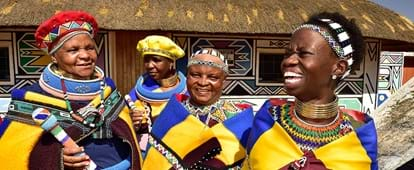7 Simple Techniques For South African Culture Today
Table of ContentsFacts About South African Culture Today UncoveredAll About South African Culture TodayAn Unbiased View of South African Culture TodayThe Main Principles Of South African Culture Today The Only Guide for South African Culture TodaySouth African Culture Today for Dummies
An issue of value in Zambian villages is the passing away of loved ones. All members of the village put money, time and effort with each other for the funeral of the deceased.Throughout the mourning period; men stay outside the home and the ladies remain inside the residence of the deceased. After speaking concerning the deceased, the village walks to the area of burial to say their last farewells. Music and dancing is an extremely vital aspect of the Zambian culture. The various tribal units have their own dance kinds; however, makishi prevails amongst all people.
Not known Incorrect Statements About South African Culture Today
When it involves music, drums are made use of the most, with a selection of drumming ceremonies. In Zambia, majority of individuals are Christian; Protestant and Roman Catholic. There are small groups of Muslims and Hindus, with the rest complying with local indigenous tribal ideas.

South African heritage and culture is greatly diverse, and consists of various groups of people who each have their own traditions and ideas. Having such a variety of individuals and societies is what makes South Africa so one-of-a-kind. In truth sense of the expression, we are a rainbow country.
Making it the 7th on the list of nations with the most Portuguese individuals in it outside of Portugal. Portuguese is not only a culture, but it is also a language and a race. Portuguese individuals originate from the nation of Portugal in Europe, nonetheless, due to Portugal (like lots of other countries in Europe) checking out the world and overcoming other nations during the 15th 20th centuries, South Africa has what we call Portuguese South African's living in it.
Little Known Facts About South African Culture Today.
Amongst the prominent features of the topography is a plateau that covers almost 2 thirds of the facility of the country. The plateau complex rises toward the southeast, where it culminates in the Drakensberg range, part of a cliff that separates the plateau from the coastal locations. The Drakensburg consists of Champagne Castle, the highest possible peak in the nation.
The region north of the Witwatersrand, called the bushveld, inclines downward from eastern to west toward the Limpopo River, which develops the global border. The western section of the plateau, the middleveld, likewise comes down in the direction of the west and varies in elevation in between the highveld and bushveld. In between the Drakensburg and the eastern and southerly coastline, the land descends to the sea.
Nearer the coastline there is a low-lying plain called the eastern lowveld. Southwest of the plateau the nation comes to be progressively much more dry, paving the way to the stony desert of the Great Karroo, surrounded on the east by the reduced, much better sprinkled plateau of the Little Karroo. Separating the dry southern inside from the sandy coastal of the southern shore and West Cape is an additional array, the Langeberg.
Things about South African Culture Today
The country's racially, ethnically, and politically separated background has actually generated nationwide and subnational symbols that still operate as signs of the country, and others symbols that are approved just by particular teams. The monuments to white inhabitant occupation and political prominence, such as the Afrikaner Voortrekker ("leader") Monument in Pretoria and the Rhodes Monolith recognizing the British colonial empire contractor and Cape head of state Cecil Rhodes, continue to be sectarian symbols.
The very first contemporary occupants were the San ("bushman") hunter-gatherers and the Khoi ("Hottentot") peoples, who rounded up animals (South African culture today). The San might have been existing for countless years and left evidence of their presence in hundreds of old cave paints ("rock art"). Bantu-speaking clans that were the ancestors of the Nguni (today's amaZulu, amaXhosa, amaSwazi, and vaTsonga individuals) and Tswana-Sotho language teams (today's Batswana and Southern and Northern Basotho) migrated below eastern Africa as early as the fifteenth century

The 2 previous republics of the Orange Free State and Transvaal (South African Republic) were established by Afrikaner settlers who beat and dispossessed the Basotho and Batswana. Lesotho would certainly have been by force integrated right into the Orange Free State without the extension of British protection in 1869. The utmost unification of the country arised from the South African Battle (18991902) in between the British and the two Afrikaner republics, which decreased the nation to destroy at visite site the start of the twentieth century.
Afrikaners traditionally considered themselves the only true South Africans and, while granting full citizenship to all locals of European descent, rejected that status to people of color up until the autonomous transition of 1994. British South Africans keep a feeling of social and social link to Great Britain without weakening their identity as South Africans.
Not known Facts About South African Culture Today
The variety and fragmentation within ethnic groups and the equilibrium of tensions between those teams throughout the twentieth century protected against interethnic civil problem. While intergroup stress over resources, entitlements, and political dominance stay, those problems are as likely to pit Zulu against Zulu as Zulu versus Xhosa or African versus Afrikaner.
From colonial India, British merchants and administrators brought the bent steel ornamental roofing systems and slender shoelace job pillars that still represent the outdoor patios of homes arounds and cities throughout the country. Holy places contribute a crucial architectural aspect also in the tiniest towns. In enhancement to the skyrocketing steeples and classic stonework of Afrikaans Dutch Reformed churches, Anglican churches, synagogues, mosques, and Hindu temples supply range to the religious building scene.

Slaughtering and the brewing of standard cereal my response beer are crucial in securing the involvement and goodwill of the forefathers that are thought about the guardians of good ton of money, success, and well-being. Indian communities maintain their indigenous cooking practices and apply them on Islamic and Hindu ritual and ceremonial events. Afrikaners and Coloured individuals collect at weekend breaks and special occasions at multifamily barbeques called braais, where neighborhood bonds are reinforced.
Due to the fact that this was the primary economic enterprise of both black Africans and white colonists, conflict in between those groups fixated the possession of grazing land and animals. In 1867, the largest diamond deposits worldwide were discovered at Kimberley in the west find more information central location. The wide range from those areas helped finance the exploitation of the biggest gold reef in the globe, which was uncovered on the Witwatersrand in 1886.
Unknown Facts About South African Culture Today
This brought about misconceptions and deliberate misstatement in the negotiations of white settlers and government officials with African principals throughout the colonial duration (South African culture today). In the facility of African books, some aspects of public and primarily "tribal trust fund" land period were preserved, and also in white country areas, kinds of common tenure were still practiced in areas with African communities
After the autonomous improvement of 1994, programs for land restitution, redistribution, and reform were instituted, but progression has been slow. The white minority still regulates eighty percent of the land. In the wake of agricultural land intrusions in Zimbabwe, the Department of Land Matters has pledged to speed up land redistribution.